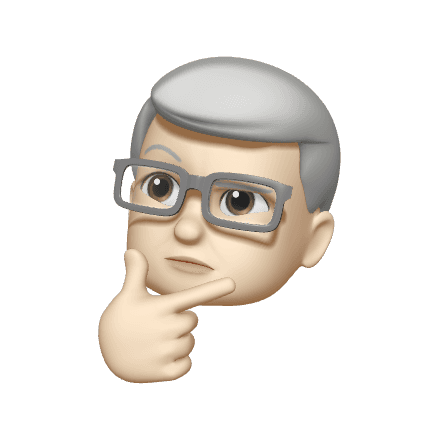A stroke strikes every 40 seconds.
Inspired by my father's experience, I designed COSMOS — a speech therapy app empowering stroke survivors to reclaim their voice.
TIMELINE
Jan - May 2024
PROJECT
Graduate Capstone
ROLE
Solo Designer
SKILLS
Product design, Interaction design, Prototyping, Information architecture, User research
PROJECT OVERVIEW
PROBLEM
40% of stroke survivors have speech disabilities
Stroke survivors face a critical gap in accessible, personalized speech therapy resources. Current solutions fall short, hindering recovery and life quality.
TARGET USERS
Stroke survivors with speech difficulties. Adaptable for individuals with speech impairments from various neurological conditions.
A gamified, voice shadowing exercise that helps users with incremental practices and boosts motivation for recovery
Daily Voice Shadowing
Voice shadowing with audio guides and AI-powered mistake detection.
Mistake Review
Compare your speech to high-quality audio examples to improve your pronunciation and delivery.
Gamified Rewards
Earn points for completed exercises, redeemable for rehabilitation-aiding products.
RESEARCH - UNDERSTANDING THE PROBLEM SPACE
USER INTERVIEW
To understand the challenges faced by stroke survivors, I conducted interviews with 12 people from three key user groups:
QUANTITATIVE DATA
I conducted 20+ surveys on stroke communities and synthesized findings from the surveys and the user interviews to identify the pain points and needs of each user group, leading to the best solution.
Stroke Survivors
Post-stroke Struggles:
Cost of Therapy
The demand for rehab therapists far exceeds supply, driving up costs.
Family Caregivers
Time Sacrifices
Family caregivers avoid hiring help due to trust, opting to devote their own time instead.
Medical Professionals
Importance of Voice Shadowing
Medical experts say voice shadowing, with correction of mistakes, is the best method for speech therapy.
COMPETITIVE AUDIT
I conducted competitive analysis to evaluate existing speech apps - for potential features and to identify market gaps:
Product
Speech-impaired Focused
Subscription Model
Voice Recognition
Accessibility Features
Personalized Content
High Affordances
Multiple Languages
Gamified Tasks
Recording Features
Most language apps are for general learnings, not specifically for stroke survivors
Lack of extensive, detailed personalization in available solutions
RESEARCH INSIGHTS
Dependance on caregivers
Enable self-guided voice recognition for better autonomy
Expensive hospital therapy
Provide affordable, at-home practice options
Limited personalization
Offer personalized therapy resources
EMPATHY CONTEXT
USER PERSONA
David, K. 59

Improve speech within a year to communicate emotions.
3+ hours daily for speech therapy
Visits 2 hospitals
Relies on wife for transportation
Time demanding hospital therapy
Dependence on wife and therapist
Easily loses motivation and focus
Regular audio-visual guidance
Affordable therapy options (short and long-term)
Consistent encouragement and motivation
USER JOURNEY MAP
USER INSIGHTS
Time demanding hospital therapy
Incorporate flexible exercises that fit any schedule
Stroke survivors often lose motivation
Boost motivation with rewards
Progress feels slow and inconsistent
Implement short, daily exercises to build consistent habits
IDEATION
HMW
(How Might We)
design a voice-activated platform that seamlessly integrates speech therapy into the daily routines of stroke survivors, ensuring consistent and repetitive practice?
LOW-FI PROTOTYPES
I sketched and evaluated four gamified, voice-activated concepts to solve the design challenge: motivating stroke survivors' daily speech practice.
IMPLEMENTING FEEDBACK
Voice Shadowing Audio Guide Options
To further develop my core feature - Daily Voice Shadowing, I conducted a second round of user testing and evaluated multiple options to determine the most effective audio guide.
Not pursued
IPHONE MEMOJI
Not pursued
Selected
REAL-LIFE HUMAN
SYSTEM MAP
To enhance usability and navigation, I prioritized simplicity and clarity. I streamlined the design by minimizing the number of tabs and reducing excessive clicking.
FINAL DELIVERY - FULL FLOW
CORE FEATURE #1: DAILY VOICE SHADOWING
How can users practice speech in short, daily sessions?
CORE FEATURE #2: MISTAKE REVIEW
How can users assess their performance and learn from their mistakes?
SUPPLEMENTAL FEATURE: GAMIFIED REWARDS
How can users stay motivated during speech therapy?
SUPPLEMENTAL FEATURE: PROGRESS TRACKER
How can users easily track their progress?
SUPPLEMENTAL FEATURE: ONBOARDING
How can users have speech therapy customized to their needs?
RETROSPECTIVE
KEY LEARNINGS
Designing for disabilities requires extensive research and demands consideration of various physical and mental limitations
Prioritizing simplicity over feature-rich designs is crucial when addressing the specific needs of users like stroke survivors
NEXT STEPS
Design Widgets & Notification Panel
Explore Additional Accessibility Features
Design the Caregiver Flow



























